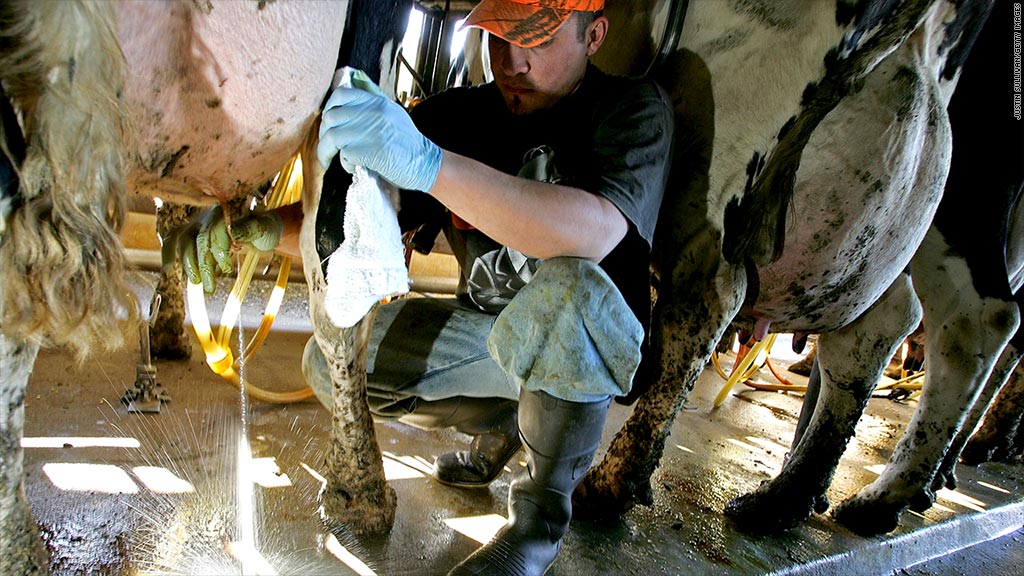
Dairy farmers are milking recent price gains for everything they're worth.
Milk prices are noticeably higher for Americans this spring versus last year. According to the vigilant price chroniclers at the Bureau of Labor Statistics, a gallon of fortified whole milk cost $3.69 in April 2014, a 7.5% increase from a year earlier and the highest price since September 2011.
"Consumers are paying more for their milk at their grocery store, there's no doubt about it," said Jack Scoville," vice president of the Price Futures Group brokerage. "And that's probably going to continue into the future."
Related: Got Milk? Not anymore.
Blame China: A lot of the milk demand is coming from China, as well as other Southeast Asian and Latin American "emerging markets" whose burgeoning middle classes are upgrading their palates to more expensive meats and milk products.
Among the top 10 export markets for milk, Southeast Asia bought 39% more American milk through April than a year ago. Chinese imports alone were up 91%, according to the US Dairy Export Council.
"We're in a global market, and markets have been red hot for dairy and protein," said Eric Meyer, dairy division president for the HighGround Trading Group, another futures brokerage.
Most of China's dairy needs get served by Australia and New Zealand, he said, but even they're seeing excess capacity, and some of that gets tossed America's way.
Smaller Slice, Bigger Pie for Dairy Farmers: The USDA said last month that the June price for Class I skim milk, the closest approximation to what you get at the grocery store, would be up a fifth from a year ago.
Farmers only see a fraction of the higher prices. Only about a third of the retail price these days is the "farm share," or the portion going to farmers. That's way down from the half they used to get in the 1980.
But that doesn't mean they aren't benefiting. The USDA says dairy farming is one of the few bright spots in commercial agriculture this year. While many farms expect to see incomes drop, dairy farmers are predicting a 28% jump.
Related: Get ready to pay more cream for coffee as J.M Smucker hikes prices.
Future of milk: So-called futures contracts for milk classes III and IV, which are used to make cheese, butter and dried milk, trade daily on commodities exchanges. These classes are easier to export, and their prices offer a real-time window into the way traders view dairy demand in the coming months.
Big food companies use these commodities contracts to lock in lower prices when they can.
Class III skim traded at the Chicago Mercantile Exchange is up 17% from year ago, and class IV skim is up 21% in the same period.
Milk prices hit record highs last month and have since come down slightly, but they're still elevated from the lows during the depths of the recession in 2009.
"Overall, it's been a positive year for dairy," Scoville.


